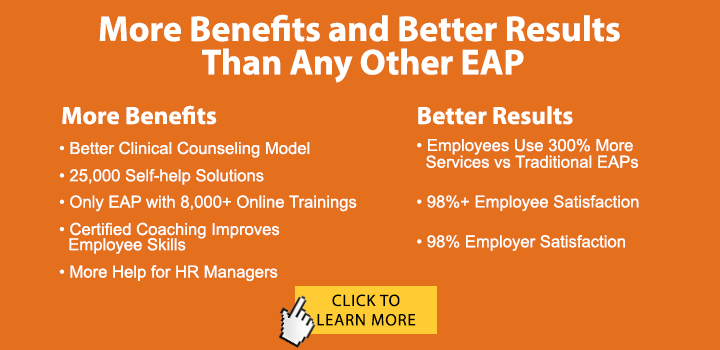People have a lot of opinions about the “Great Resignation” – a global trend of workers quitting their jobs. Nobody can fully agree on why it is happening or how long this will continue, but HR leaders do have thoughts about how employers can navigate these choppy waters. Employers and employees alike are trying to understand what “the new normal” is or will be – in fact, they are having a little disagreement about what they want that future to look like. But one thing is clear, employees are holding most of the cards right now. It’s an employee’s market, leaving employers struggling to retain and recruit workers.
There’s no doubt. Something seismic is happening with the workplace, for sure. And it’s not just in the US:
“The trend is worldwide. In the UK, job vacancies soared to an all-time high in July, with available posts surpassing one million for the first time. In the US, four million people quit their jobs in April – a 20-year high – followed by a record ten million jobs being available by the end of June. A Microsoft study has found that 41% of the global workforce is considering leaving their employer this year.”
The Great Resignation is here and no one is prepared, Aaron P. Bernstein, Wired
Things haven’t gotten much better as the year progressed. USA Today reports that in October,
“The number of quits fell from 4.4 million to 4.2 million, meaning 2.8% of workers voluntarily left their positions, typically to take another job. Before the pandemic, quits hovered at about 3.5 million.”
“Employers posted 11 million job openings, up from 10.6 million the previous month and just below July’s record clip. Openings have topped 10 million for five straight months” in September alone, a record 4.4 million US employees (3% of the workforce) quit their jobs.
Why so many resignations?
People don’t agree on why so many people are resigning, while at the same time, job openings are soaring and left unfilled. Pundits blame it on the pandemic, burnout, overly generous unemployment checks, health fears, mandatory vaccinations, laziness, return-to-the-workplace anxiety, unwillingness to accept jobs without flexibility or work from home options, job dissatisfaction, feeling overworked, being unmotivated by the job, lack of growth opportunities, poor pay, and inability to find a sense of purpose or meaning in the work.
Others offer more complex explanations of supply and demand dynamics.
“Given that unemployment rates are falling, and vacancies are sky-high, where are all these workers going? Hard to believe we’re now simply witnessing a backlog. The pressure cooker of demand, largely suppressed for 18 months, has finally exploded as economies boom. Businesses, therefore, are on the lookout for talent. “If businesses want to grow, they need to hire,” Hardt says. And that demand is fast outpacing the job market’s supply, causing a record number of vacancies.”
More from Wired: The Great Resignation is here and no one is prepared
Gallup says that The Great Resignation is Really the “Great Discontent” noting that “it takes more than a 20% pay raise to lure most employees away from a manager who engages them, and next to nothing to poach most disengaged workers.”
Monster’s Fall 2021 Hiring Outlook says:
- Burnout is the #1 reason employees gave Monster for quitting their jobs.
- 29% of employees said they are quitting their jobs because of a lack of growth opportunities.
- Nearly half of workers (45%) would be more likely to stay with their employer if they were offered skills training.
And we found this nuanced assessment – What can one manager do about the Great Resignation? – to be on point:
So let’s operate as if the Great Resignation isn’t just people quitting and sitting at home. Thankfully, there is at least some evidence for alternative explanations. For example:
- Public-facing, low-paying jobs are being disproportionately affected, largely because of COVID-19’s continued threat.
- Quits rates are at record levels, but 2019’s quits rate was already near a 20-year high
- There are fewer workers — permanently — because older boomers are retiring, whether by choice or because they were let go.
- There are fewer workers — temporarily — because married people are holding off, preferring to rely on one income and reduce their worries about COVID-19, child care costs, and so forth.
- There are fewer workers — temporarily and maybe permanently — because people are starting their own businesses at higher rates.
- People who shifted to remote work because of COVID-19 don’t necessarily want that life forever, but they don’t want a blanket return to the worksites, commutes, benefits and structures of February 2020.
Pulse Future Forum conducted global research encompassing 10,000 knowledge workers in the tech industry, which revealed what they termed the great executive-employee disconnect:
New data shows the C-suite is faring much better on nearly every measure of employee experience—and reveals a major chasm between employee expectations and executive-imposed policies.
- Most executives (66%) report they are designing post-pandemic workforce policies with little to no direct input from employees.
- While two-thirds of executives (66%) believe they’re being “very transparent” regarding their “post-pandemic” policies, less than half of workers (42%) agree.
- Of those currently working fully remotely, nearly half of all executives surveyed (44%) want to work from the office every day, compared to 17% of employees (2.6x difference). And 75% of these executives say they want to work from the office three to five days a week, versus only 34% of employees.
- Executive overall job satisfaction is now 62% higher than non-executives, driven by higher scores on flexibility (+51%), sense of belonging (+52%), work-life balance (+78%) and work-related stress and anxiety (+114%).
What employers should do in response to “The Great Resignation”
Recruiting new workers is extremely competitive so you must be prepared to bring your “A” game and leave nothing on the field:
“Today, when you‘re having a conversation with a candidate who’s making a decision about whether to work at your company,” Monster chief executive officer Scott Gutz says, “you have to talk about flexibility, safety and security, career paths, mission and vision, diversity and equity and inclusion, and your willingness as an employer to grow their career. Those are things that are expected right up front now, not after the fact.”
Retention is another matter. It makes sense to go to great lengths to retain your current staff if possible – although they are probably being courted or thinking about their options in a market with so many openings. Here’s some advice from HR pros.
Address burnout and stress in a meaningful way. “Mental health notably has worsened over the course of the pandemic, with rates of depression, anxiety, stress and post-traumatic stress disorder increasing exponentially. But after well over a year of COVID-19 and its associated challenges, burnout, in particular, may be the biggest problem now facing employees.” – from Human Resource Executive – Burnout is soaring. Here are 7 ways employers can help
Develop, train, and upskill your people – including your managers and leaders. “In a June 2021 survey with Amazon, Gallup found that 57% of U.S. workers want to update their skills and 48% would consider switching jobs to do it … In fact, workers aged 18 to 24 consider upskilling a more important benefit than retirement, sick leave, parental leave, life insurance and vacation. Even among workers aged 55 and older, more than half (53%) say upskilling is “very” or “extremely” important. ” See: Shifting Focus From Remote Work to Training and Development in 2022.
Focus on mission and values. A recent research study showed that “values alignment is so important that 52% of workers say they would quit their job — and only 1 in 4 would accept one — if company values are not consistent with their personal values. ” Here are 5 ways leaders can use the Great Resignation to reevaluate what their business stands for.
Communicate frequently: See Consistent Performance Management Can Help Employee Retention and Ditch the exit interviews and offer “stay interviews” instead.
Foster Engagement. TINYpulse defines employee engagement as “the degree to which an individual is emotionally, cognitively and behaviorally invested into their work.” On their blog, they offer The Top Employee Engagement Trends HR Leaders Should Watch In 2022.
Manage the employee experience: Think of talent retention like you think of customer retention.
Finally, we’d be remiss if we didn’t mention that a good Employee Assistance program such as ESI EAP can go a long way to helping with retention and recruitment. Click to learn how.
Additional “Great Resignation” resources


